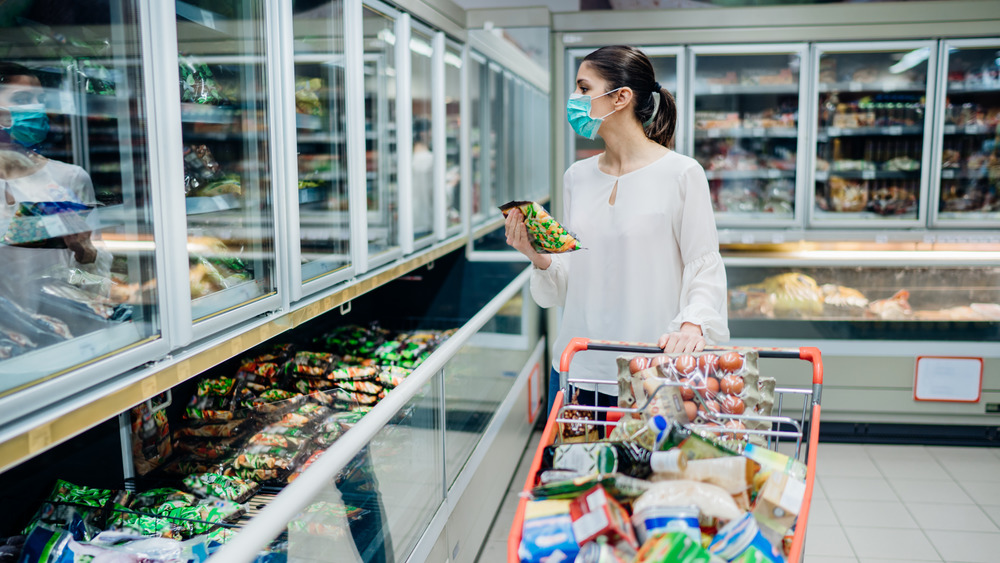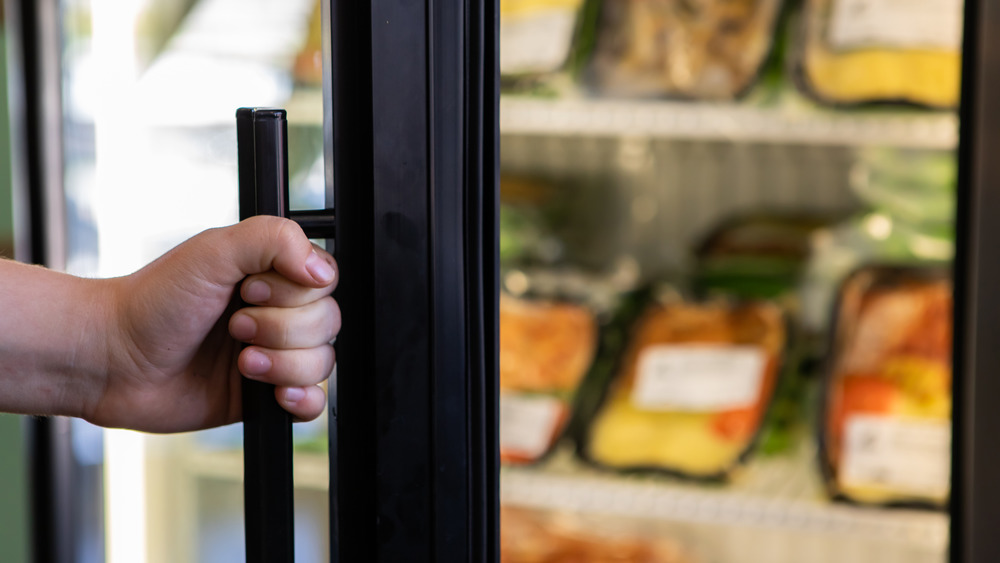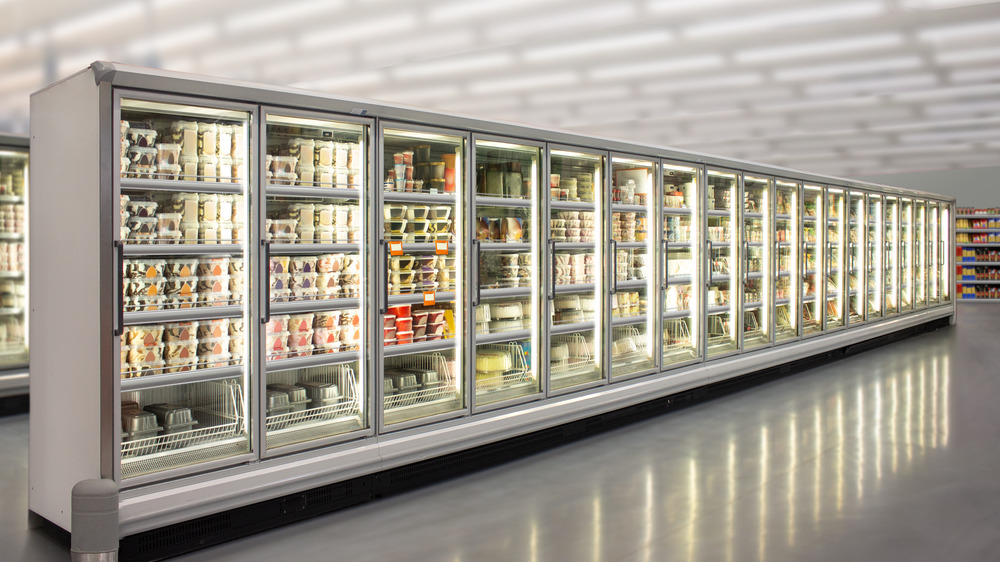The Surprising Way Your Grocery Store Freezer Aisle Is Contributing To Global Warming
The Montreal Protocol is one of the most successful global agreements on climate change. The pact, which was signed by nearly 200 countries in 1987, phased out the production and widespread use of chemicals called chloroflourocarbons (CFCs) that were causing the depletion of the ozone layer, which filters out the ultraviolet radiation linked to skin cancer (via U.S. Department of State). In its place, countries were to use hydrochlorofluorocarbons (HCFCs) which were less damaging. This would eventually need to be phased out as well, because they also had detrimental effects on the environment (via Australian Government).
While these HFCs are still being used in refrigerators and freezers across most of America's supermarkets today, the Biden administration is hoping to change that by asking companies to report data on HFC use, because the chemical is leaking into the atmosphere at a higher rate than officials first thought, thanks to a problem which was spotted at the local grocery (via The Washington Post).
Today's supermarkets can hardly be considered a temple to environmental protection. Air-conditioners are running at temperatures that many of us would consider to be comparable to that of an Arctic tundra. There are the lights that stay on for the entire time a store is in operation. And then there are the convenient appliances, like refrigerator and freezer cases that keep working even when none of us are around, to make sure perishable items don't spoil. But that is not the problem.
Supermarket refrigerator leaks are an unseen problem
In a report by the advocacy group Environmental Investigation Agency (EIA), investigators found that supermarkets are leaking HFCs at what The Washington Post estimates is a quarter of the amount of coolant which is loaded onto a fridge or freezer to keep it working properly (via Climate Friendly Supermarkets).
During their investigation, which made use of leak detection technology like leak detectors and infrared cameras, the group said 60 percent of Walmart stores across the DC, Virginia, and Maryland areas were found to have a refrigerant leak. Among the greater sampling of stores visited — which The Washington Post says included Aldi, Costco, Giant, Harris Teeter, Trader Joe's and Safeway — 55 percent of stores were, in the group's words, "measurably leaking super pollutants."
The group also did the math so we didn't have to. They estimate that one store using HFC refrigeration could be leaking the equivalent 300 cars worth of carbon dioxide. They also found that because there are over 38,000 supermarkets across the country, our groceries are leaking the equivalent of burning 49 billion pounds of coal a year.
There can be an easy fix: environmental experts
Rather than being a transgression that is consciously being carried out, investigators say that supermarkets are most likely unaware that these leaks are actually taking place. But, as the EIA's climate lead, Avipsa Mahapatra put it to The Washington Post, "This is a systemwide, industry-wide problem. In reality, they could easily check for this."
The band-aid solution is simple: The EIA recommends that both companies and the government to work together in order to ensure the leaks — even those which can be spotted in tiny amounts — are identified and repaired at every store. While the ideal solution would be to phase out the use of HFCs altogether, managing the use of refrigerants responsibly would go some way in making this a problem easily solved. But, while it costs $50,000 to $100,000 to fix a system, it costs $1 million to $2.5 million to make the switch to a more energy efficient, HFC-free system (via The Washington Post), and we don't see any supermarket chain making that kind of investment anytime soon.


